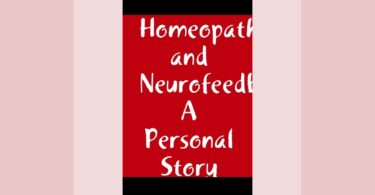The COVID-19 pandemic is variously impacting the raw materials supply chain of U.S. manufacturers of homeopathic products, timelines for delivery to their distributers and the availability of products on store shelves and via online retailers.
Three developments illustrate the problems for those who make and use homeopathic medicines:
- In the early days of the pandemic several homeopathic remedies became unavailable for purchase in stores and online retail outlets.
- The demand for hand sanitizers has depleted reserves of ethanol, isopropyl alcohol and polymers, all essential for making homeopathic medicines.
- Glass bottles, used for packaging homeopathic remedies, come from China. U.S. supplies are now threatened by the ongoing United States-China trade war.
Raw materials and packaging shortages
Manufacturers are having to focus more on securing enough inventory to continue production.
Mike Evans, president of Apotheca Inc., a contract manufacturer of homeopathic products for several popular brands of homeopathic medicines, said that, among raw materials, supplies of ethanol and isopropyl alcohol are the hardest hit. He added that polymers needed for gels and creams have become scarce as well.
Ethanol is the primary menstruum (a substance that dissolves a solid or holds it in suspension) for making homeopathic tinctures and dilutions. “Homeopathic products are processed in ethanol,” Evans explained. “As soon as everybody needed hand sanitizers, ethanol was gone.”
Polymers function as support materials for creams and gels. Evans said that because they, too, are components of hand sanitizers, private individuals have stockpiled them (likely hoarding to drive up the price of their inventories), making them difficult for manufacturers to obtain.
The pandemic has also affected the supply chain of raw materials sourced from animals. The pig and cattle industries suffered a brief, but significant downturn. They are starting to come back. From these animals, specific anatomical parts are processed to produce a class of homeopathic remedies called Sarcodes. “Sarcodes are homeopathic preparations obtained from healthy animal tissues and secretions that contain biological molecules which have specific physiological functions in humans.”[1] Epinephrine and cortisone are examples of this important group of medicines.
Glass bottles from China are also a concern. According to Robert Melo, president of OHM pharma Inc., a manufacturer of products for professional homeopaths: “There is no manufacturer of such bottles in the United States.”
The price of these bottles has increased by 25 percent due to a recently enacted U.S. tariff, part of a larger set of moves by the current U.S. administration in an ongoing trade war with China.
Delivery delays and price increases
Obtaining packaging supplies and raw materials from other countries has become a struggle. Orders are getting through customs only sporadically, increasing lead time. Prices have increased as well:
- Sucrose, used to make homeopathic pellets, has increased in price by 99 percent.
- Optiphen Plus, Liquid, a preservative used in cosmetic products, has increased by 10 percent per pound.
- Silsense® Copolyol-1 Silicone Dimethicone Copolyol Blend, used in making body lotions, creams and gels has increased by 5.8 percent per pound.
At the beginning of the pandemic, significant delays were experienced when sourcing from Italy which supplies plant materials for making tinctures. Tinctures are concentrated liquids which are then diluted many times to make finished homeopathic medicines at specific potencies.
Delays are common for materials made in the United States as well. “Lead time for materials sourced from within the United States has quadrupled,” said Evans. “We normally have four to six weeks. Now it’s up to 16 to 20 weeks.”
Impact on distributers
Because COVID-19 has hit employees at manufacturing facilities around the world, many suppliers of ingredients essential for homeopathic medicines have shut down. Most of the supply chain was ill-prepared to sustain such lengthy shutdowns.
Shutdowns impact the facilities’ customers, starting on the ingredient level. One plant may supply an ingredient to 200 manufacturers. When the plant shuts down, those manufacturers may need to withdraw affected products from the marketplace.
Naturally, when manufacturers can’t make certain products for lack of ingredients, distributers can’t get them.
Evans observed that the situation is not the same everywhere. It differs in degree and changes with time, centering quite a bit on where the pandemic hot spots are. “It’s like a moving target,” he said.
Currently, the shortages are sporadic. One distributer will have a product, and another won’t. Shortages are being seen regionally, but Evans believes they will eventually become national.
Scarcity of over-the-counter remedies
Near the start of the pandemic, American consumers discovered that the remedy Arsenicum album was impossible to find. It was not available in co-ops; it was missing from shelves in health-food stores such as The Vitamin Shoppe and Whole Foods. Online retailers also had none.
These shortages took place in the wake of the Indian Health Service identifying Arsenicum album as being a likely choice for addressing COVID-19 symptoms.
This scenario was repeated sometime later when Bryonia alba was referenced by many practitioners as useful in addressing symptoms associated with the virus. Bryonia, too, quickly disappeared from store shelves and online retailer sites. A number of homeopaths provided links to where people could get some of the last remaining supply of Bryonia. Visitors to those links quickly purchased some for themselves and their friends.
Dr. Ronald D. Whitmont, a homeopathic physician and past president of the American Institute of Homeopathy, said that for a number of his patients he recommends they obtain a homeopathic medicine from a health-food store or order it online. Since the beginning of the COVID epidemic, when he has communicated with them and asked how they were feeling after taking the medicine, some said, “I’m still waiting for it.”
He heard stories from others about store shelves being empty of remedies that have been widely recommended. Bryonia alba and Gelsemium sempervirens were hard to obtain. “These are top medicines in this epidemic, and they’d been bought out.”
From what he has heard from the pharmacies, this situation has improved. “It took a while. I think everyone was sort of taken by surprise. The pharmacies were able to restock,” Whitmont said.
Large warehouses may provide a viable solution
Evans said Apotheca has a large warehouse with continuously restocked inventory. Because he’s a big enough buyer, as the pandemic spread, several of his suppliers—seeing increased demand for items he generally uses—called to offer him the opportunity to buy extra stock. Consequently, he has never run out of supplies. His warehousing strategy has been effective in sustaining productivity during the course of the pandemic.
Melo backed up Evan’s take on the advantage of holding large amounts of inventory. His warehouse covers almost 80,000 square feet. At the start of the pandemic he overstocked, ordering supplies for more than six months ahead. He is currently reordering to increase inventory. Melo wrote in an email:
The only way to survive this pandemic effect is to have a big warehouse and be prepared to invest substantial resources in maintaining a high inventory of packaging and raw materials. As you can realize, this is a big challenge due to the cash flow effect.
Dark days ahead?
In the manufacture and distribution of homeopathic products, as in all aspects of living with the COVID-19 pandemic, the situation is ever changing and unpredictable. It’s impossible to know where the infection hot spots will appear next, and what the impact will be.
For manufacturers supplies of ethanol continue to be scarce. For patient’s medicines could disappear from store shelves if they are publicized as being effective in addressing COVID-19 symptoms. Supplies of remedies packaged in glass for use by homeopathic practitioners may be compromised by the ongoing trade war between the United States and China.
“I don’t know what next week’s going to bring,” Evans said. “This is what’s happening, but it will probably get worse.”
[1] Karthik, S., Jadhav, A.P. (2017, January). Nosodes and Sarcodes. Indian Journal of Traditional Knowledge,16(1). Retrieved from https://pdfs.semanticscholar.org/8a30/ddfe858df58e8aaf4278c93bc2a62d3aa130.pdf







I really enjoyed your article. As a practitioner some of my clients have had trouble finding certain remedies and now I know why. Thank you for covering a Homeopathic issue. DB
Hi Dianne, I’m sorry this reply comes so late. I had no idea that people could comment on this post. I’m very glad I could shed some light on the, I believe brief, scarcity of certain remedies. I believe that this problem has been resolved. Thank you so much for writing! Best, Rhonda